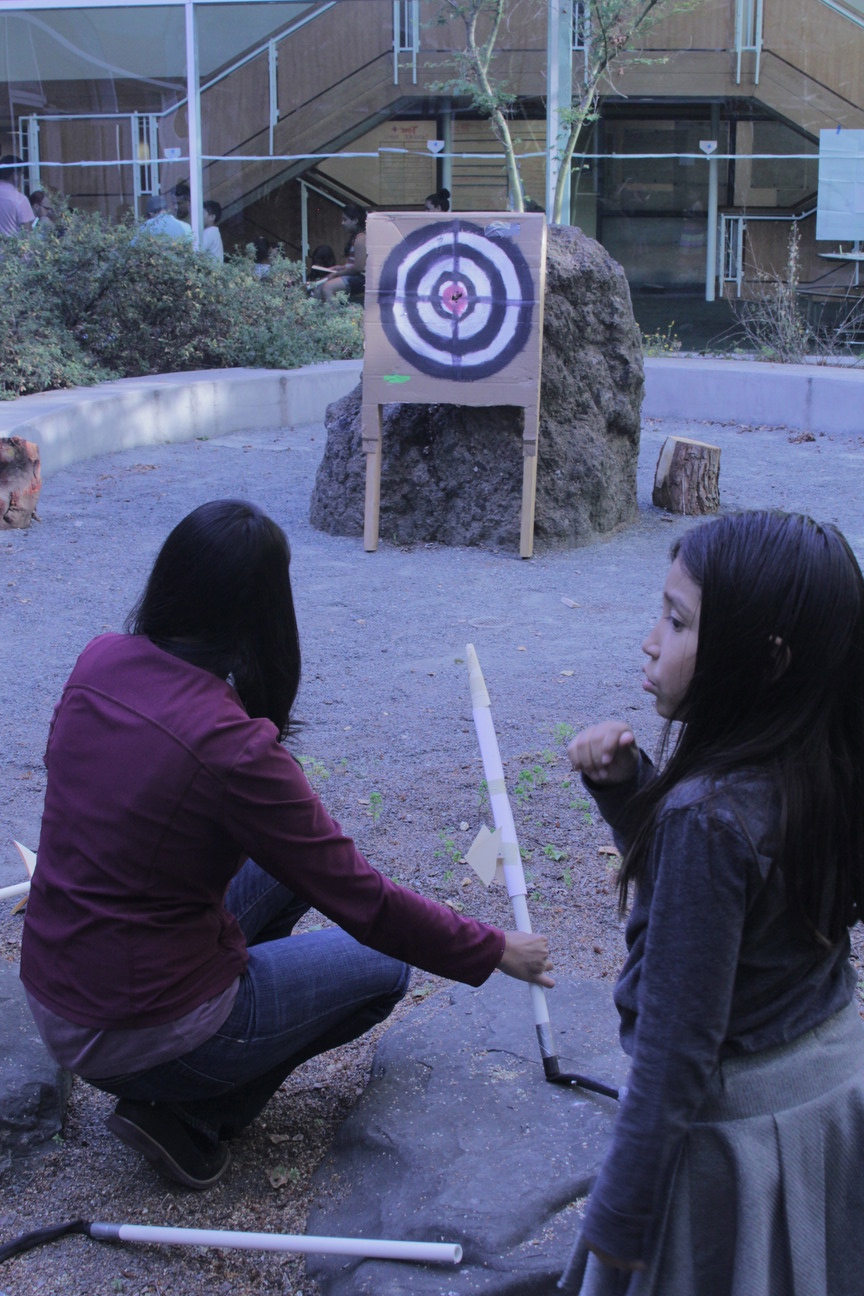Being newer to the Maker Ed team, I’ve been looking for more opportunities to see making in action. Last week, I got my chance when Lighthouse Community Charter School (one of our Maker Corps and Maker Vista sites) invited me to check out their end-of-year expo of student work. At the expo, parents, students and educators gathered together to visit classrooms, share student projects, and (of course) participate in making.
Not surprisingly, I spent most of my time at the expo’s two making stations, where Aaron Vanderwerff (Lighthouse’s K-12 Makerspace and Science Coordinator), Anisa Bora and Jessica Grey Schipp (Lighthouse’s VISTA members) were helping students create paper circuits, and build and launch stomp rockets. While making alongside Lighthouse’s diverse student body, I was struck by the effectiveness of several unique learning and teaching practices there, and how tied to making these practices were. Here are three insights I gathered from the time I spent making at Lighthouse:
1. Peer-to-Peer Teaching and Learning
Educators at Lighthouse encouraged an exchange of knowledge between students of varying experience levels. Those who knew more about making were often asked to help those who knew less about making with their projects. (In fact, I learned how to make and launch my stomp rocket from an 8th grader. Pretty cool, right?) By encouraging students to learn from one another, Lighthouse educators not only helped their students build important skills (like interpersonal communication and resourcefulness), they also empowered their students to see themselves as sources of knowledge – a powerful experience for any young person.
2. Marvelous Mistakes & Solution-Oriented Learning
As with any act of making, there were times at the expo when students faced setbacks with their projects––when something didn’t work quite the way they expected it to, or things didn’t work at all. In those instances, it was remarkable how educators were able to shift the focus away from the frustration that students were feeling, and instead encouraged them to think constructively about the problem. By gently guiding students to consider what they could have done differently, to iterate on their projects, and to look for solutions, educators at Lighthouse used these setbacks as opportunities for learning.
3. Making Learning Exciting
It was completely evident how excited the kids at Lighthouse were about the projects they were making. When students completed circuits and made an LED light up, their faces lit up as well. When the rockets they built flew so well that they hit a window or got stuck on the roof, they went wild! And most importantly, while they were having all this fun making, they were learning about electrical circuitry, physics, and engineering. It’s these kinds of experiences that kids will remember when they get older, and these kinds of experiences that get them excited about learning.
Lastly, I’d like to share a story from my time at Lighthouse that really stuck with me, and it’s one that illustrates all three of these insights at once:
One young girl was trying to launch her rocket, and she was having a hard time making it fly. She stomped on the bottle with all her might, but the rocket just wouldn’t budge. She was frustrated. Noticing this, Anisa directed her to ask an older student why he thought the rocket wouldn’t fly. He noticed that the the top of rocket was losing air, and told her it needed to be sealed up so the air wouldn’t escape. Armed with the knowledge she needed to fix her rocket, the girl skipped back inside, excited to tape it up and try again.
It was these kinds of collaborative spirits, constructive attitudes, and empowering practices that I was hoping to see when I asked for the opportunity to see in making & education in action. I’d like to thank Lighthouse for making that possible.

